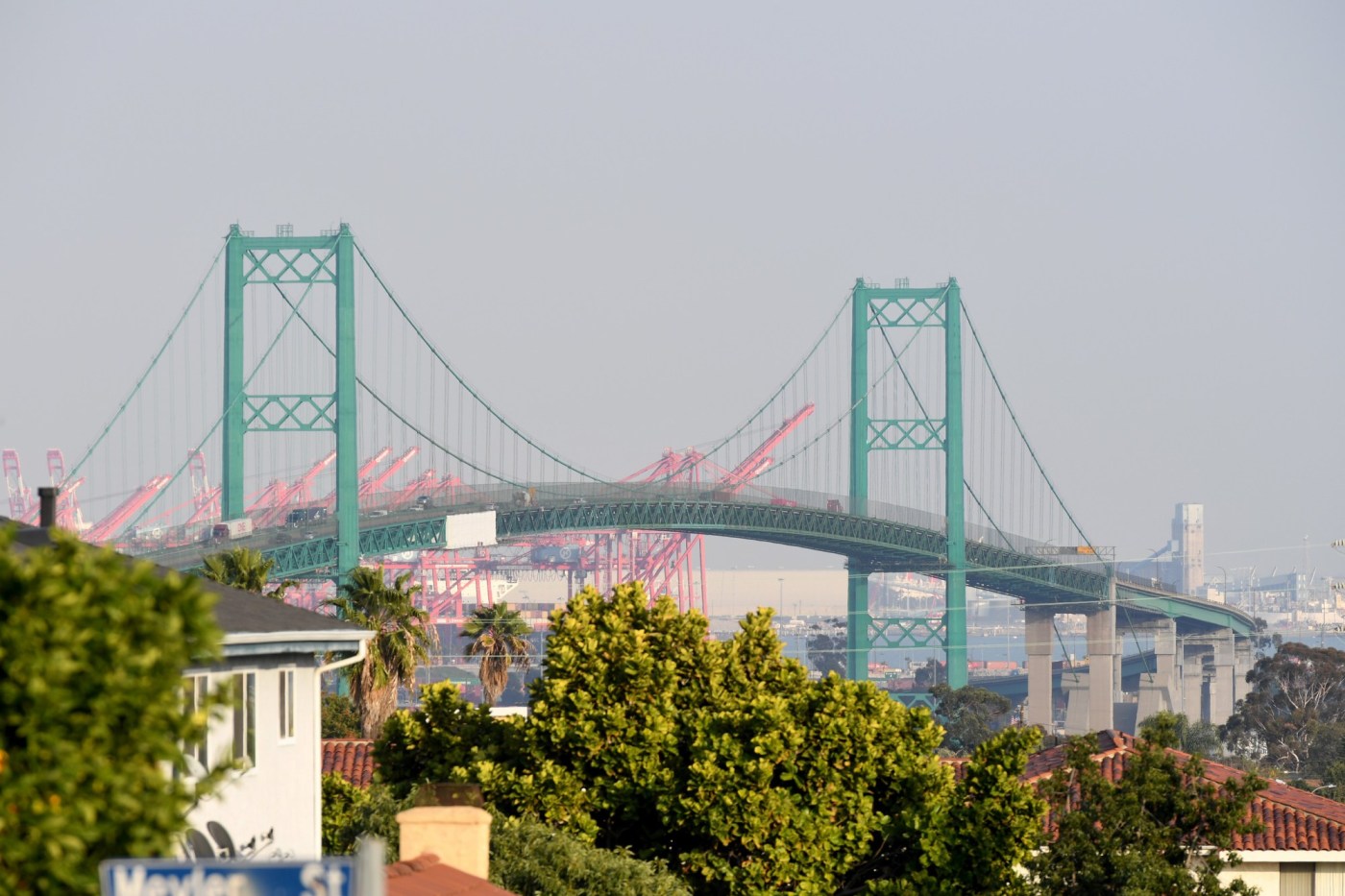Top Stories
Vincent Thomas Bridge Plans Shift: New Bridge Discussion Looms

URGENT UPDATE: Plans to raise the Vincent Thomas Bridge during an imminent deck replacement project have been scrapped, prompting serious discussions about potentially building a new bridge instead. This change comes as the California Department of Transportation prepares for a significant closure of the bridge set to begin in January 2026.
The decision not to pursue the bridge-raising proposal, initially championed by Gene Seroka, Executive Director of the Port of Los Angeles, has major implications for cargo transport in the region. The bridge, constructed in 1963, currently limits the passage of modern ships, with around 40% of the port’s terminal space located behind it. As larger vessels increasingly dominate shipping lanes, the urgency to accommodate them has intensified.
Officials cited complications in combining the bridge-raising project with the scheduled deck replacement as the reason for the shift. The proposed bridge modification, estimated at $1.5 billion, would have raised the structure by approximately 26 feet, enhancing clearance for the world’s largest container ships. However, state authorities indicated that the logistics of merging these projects could jeopardize existing funding designated solely for the deck replacement.
“The timing just didn’t work out,” stated Mike Jacob, president of the Pacific Merchant Shipping Association, in a recent interview.
Despite the setback, Seroka remains optimistic about future projects that could involve either raising the existing bridge or constructing a new one. “All parties recognize the benefits of additional clearance to jobs and the long-term economic vitality of both the Port of Los Angeles and California,” Seroka noted in a written statement.
The California State Transportation Agency emphasized the bridge’s vital role, stating it sees more than 10,000 truck trips daily, making it crucial to the national economy. The scheduled redecking project aims to enhance safety and facilitate smoother transport across the bridge, with completion targeted before the LA 2028 Olympic and Paralympic Games.
As discussions about a new crossing gain traction, experts warn that constructing an entirely new bridge could come with significant costs and extended timelines. For comparison, the neighboring International Gateway Bridge, which supports the Port of Long Beach, took a decade to build and incurred costs exceeding $1 billion.
If the option to raise the current bridge is off the table, Jacob highlighted that this opens the door to broader discussions about replacing it entirely. “There’s a bit of liberation associated with that,” he remarked, suggesting that comprehensive community input will be essential in shaping the future of this critical infrastructure.
As the timeline for the full road replacement looms, preliminary work will begin in 2026, with a full closure expected by late next year. This extended closure is projected to disrupt traffic significantly, affecting commuters and cargo transport between Long Beach and San Pedro.
The transition has left many in the community anxious about the potential for increased traffic and delays. The Vincent Thomas Bridge stands as a historical and economic symbol for many in San Pedro, making the future of this landmark a pressing concern.
As planning progresses, stakeholders are encouraged to engage in discussions that could redefine transportation in and around the Port of Los Angeles. This pivotal moment in infrastructure planning will not only impact local economies but could redefine shipping logistics on a national scale.
Stay tuned for further updates as this situation develops.
-

 Science3 weeks ago
Science3 weeks agoInterstellar Object 3I/ATLAS Emits Unique Metal Alloy, Says Scientist
-

 Science3 weeks ago
Science3 weeks agoResearchers Achieve Fastest Genome Sequencing in Under Four Hours
-

 Politics3 weeks ago
Politics3 weeks agoAfghan Refugee Detained by ICE After Asylum Hearing in New York
-

 Business3 weeks ago
Business3 weeks agoIconic Sand Dollar Social Club Listed for $3 Million in Folly Beach
-

 Health3 weeks ago
Health3 weeks agoPeptilogics Secures $78 Million to Combat Prosthetic Joint Infections
-

 Lifestyle3 weeks ago
Lifestyle3 weeks agoJump for Good: San Clemente Pier Fundraiser Allows Legal Leaps
-

 Science3 weeks ago
Science3 weeks agoMars Observed: Detailed Imaging Reveals Dust Avalanche Dynamics
-

 World3 weeks ago
World3 weeks agoUS Passport Ranks Drop Out of Top 10 for First Time Ever
-

 Health3 weeks ago
Health3 weeks agoResearcher Uncovers Zika Virus Pathway to Placenta Using Nanotubes
-

 Entertainment3 weeks ago
Entertainment3 weeks agoJennifer Lopez Addresses A-Rod Split in Candid Interview
-

 Business3 weeks ago
Business3 weeks agoSan Jose High-Rise Faces Foreclosure Over $182.5 Million Loan
-

 Top Stories3 weeks ago
Top Stories3 weeks agoChicago Symphony Orchestra Dazzles with Berlioz Under Mäkelä









